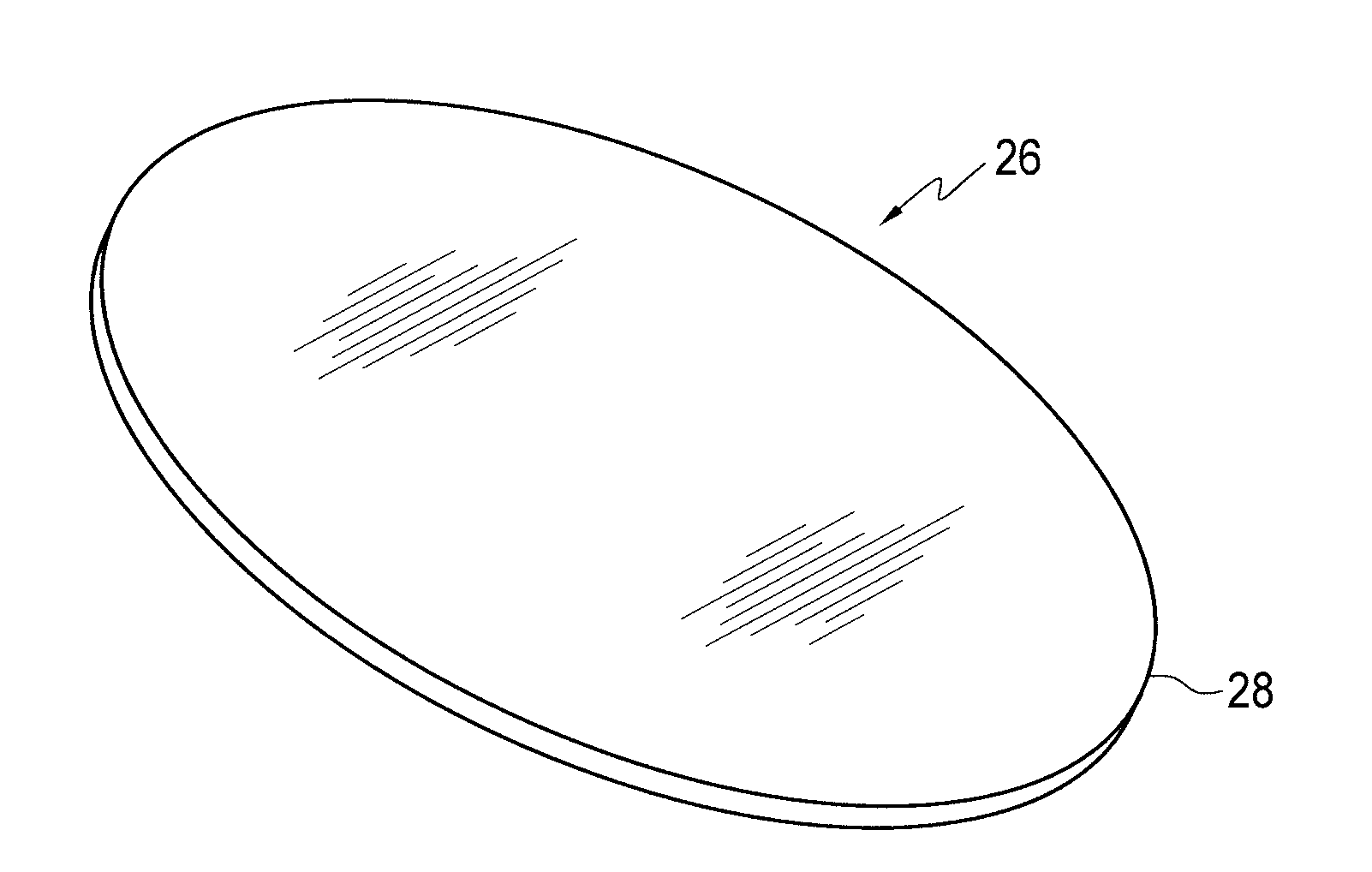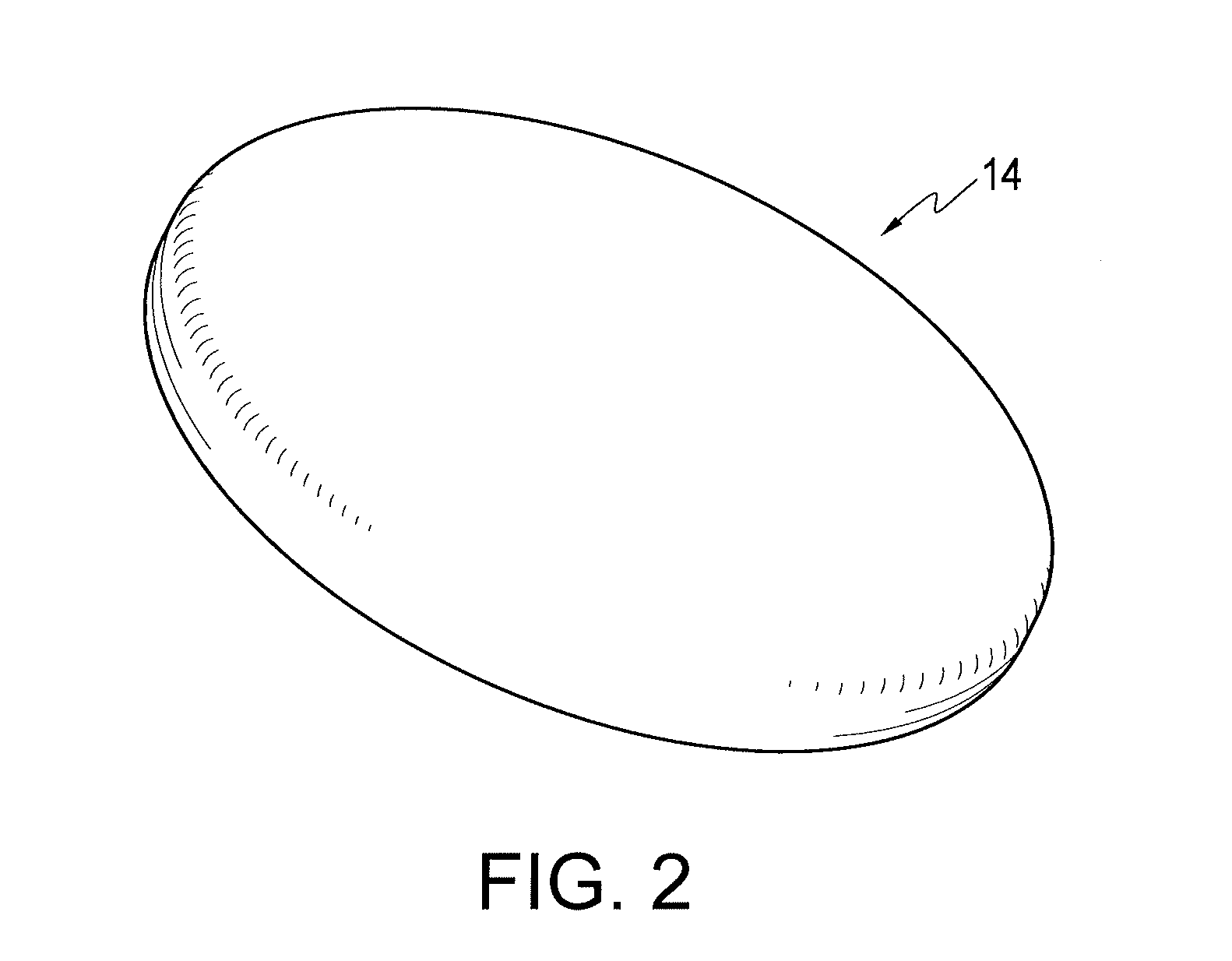RFID tag for a personal care appliance
- Summary
- Abstract
- Description
- Claims
- Application Information
AI Technical Summary
Benefits of technology
Problems solved by technology
Method used
Image
Examples
Embodiment Construction
[0012]The present invention involves a new edge configuration for an RFID tag which is designed to operate well in challenging environmental conditions. It has been discovered by the inventors herein that the conventional laminated RFID tags often become delaminated due to failure of the adhesive bond between the tag and the mounting surface and the laminate structure itself in challenging conditions, such as those conditions which produce high solvent exposure and where there is vibration, with rinsing and drying operational cycles. It has further been discovered that with conventional RFID tags, delamination frequently begins at the existing sharp corners (12-12 in FIG. 1) of a tag because sharp corners of the tag are more susceptible to absorbance of solvents and therefore more susceptible in initial separation or delamination, leading to a more general failure of the lamination structure and / or the entire adhesive bond of the tag. FIG. 5 shows the top left portion (1 cm×1 cm) of...
PUM
 Login to View More
Login to View More Abstract
Description
Claims
Application Information
 Login to View More
Login to View More - R&D
- Intellectual Property
- Life Sciences
- Materials
- Tech Scout
- Unparalleled Data Quality
- Higher Quality Content
- 60% Fewer Hallucinations
Browse by: Latest US Patents, China's latest patents, Technical Efficacy Thesaurus, Application Domain, Technology Topic, Popular Technical Reports.
© 2025 PatSnap. All rights reserved.Legal|Privacy policy|Modern Slavery Act Transparency Statement|Sitemap|About US| Contact US: help@patsnap.com



